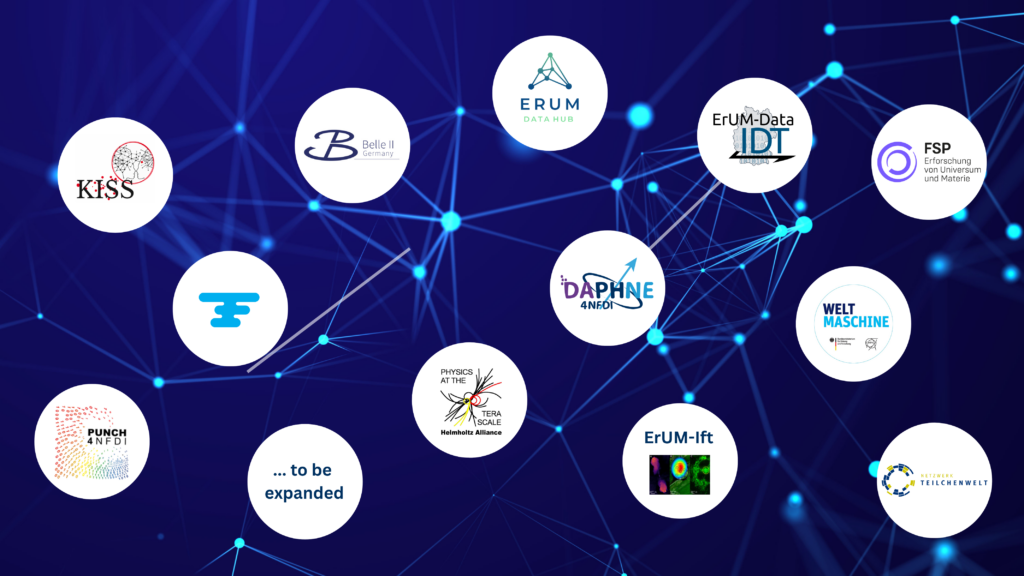ErUM-Projects
ErUM-Projects
Overview of the various ErUM projects in Germany
Overview of the various ErUM projects in Germany
In Germany, many exciting projects are involved in the exploration of the universe and matter. While these projects follow different research approaches, they also share many commonalities. We are always interested in exchange and expanding collaboration and look forward to leveraging synergies with other projects.
Contact us if you are interested in connecting our projects.

DAPHNE stands for DAten aus PHotonen und Neutronen Experimenten. It is a project for a National Research Data Infrastructure (NFDI) funded by the German Research Foundation (DFG). In order to meet the challenges of data and metadata management and high data rates, DAPHNE develops solutions for outstanding scientific experiments together with the user community.
Location Garching / Karlsruhe / Hamburg
IDT stands for Innovative Digital Technologies for Research on Universe and Matter. In order to meet the challenge of increasing data rates and volumes, 17 partners from universities and research centers have joined forces in the BMBF-funded ErUM Data pilot project Innovative Digital Technologies for the Exploration of Universe and Matter. The aim is to open up modern technologies for the development of experimental, comprehensive solutions.
Location Garching
Ift stands for Informationsfeldttheorie for experiments at large-scale research facilities. Information field theory was originally developed for astrophysical measurements. However, since it is so general, it can also be used for any measurement of field-like quantities. The ErUM-Ift project aims to solve exemplary imaging problems for several large-scale research facilities.
Location Garching
FIDIUM stands forFederated Digital Infrastructures for Research on Universe and Matter". Advances in the fields of experimental particle, astroparticle, hadron and nuclear physics are producing ever-increasing amounts of research data. The higher resolution of modern instruments has led to huge data sets, reaching the order of millions of terabytes and more, requiring not only extensive computing and storage resources, but also user-friendly access. FIDIUM aims to solve these challenges by virtually combining multiple complex infrastructures offering a range of services.
The LHC-ErUM is a joint communication and transfer project of the four ErUM research focuses (ALICE, ATLAS, CMS and LHCb) at the Large Hadron Collider. The office organizes a wide range of measures for the partners involved in the areas of public relations, promotion of young scientists and knowledge and technology transfer.
Location Hamburg
KISS stands for Künstliche Intelligenz zu schnellen Simulation of scientific data. The project was set up to develop AI-based simulation methods that enable faster, more flexible and more efficient analysis of research data compared to conventional methods. One aim of KISS is to promote a more sustainable use of existing resources in data analysis through the development of AI-based algorithms.
Location Dresden
Location Hamburg / Bonn
Location Hamburg
Location Hamburg
The ErUM-Data-Hub is the central networking and transfer office for the digital transformation in the exploration of universe and matter.
As a Digital Knowledge Agent, we offer Digital Transformation in fundamental ErUM Research.